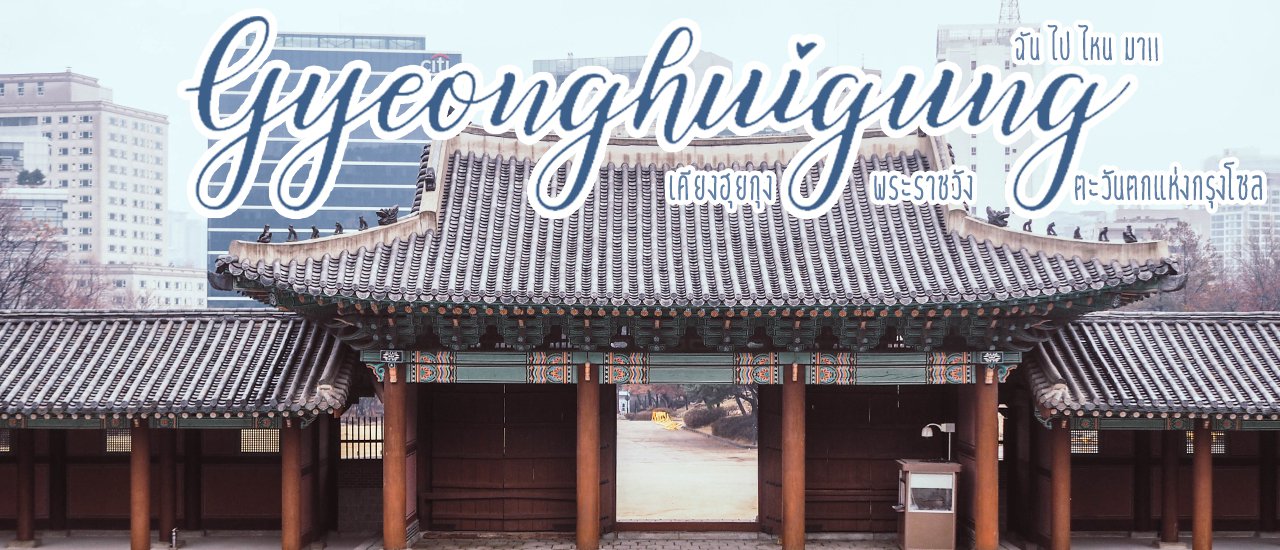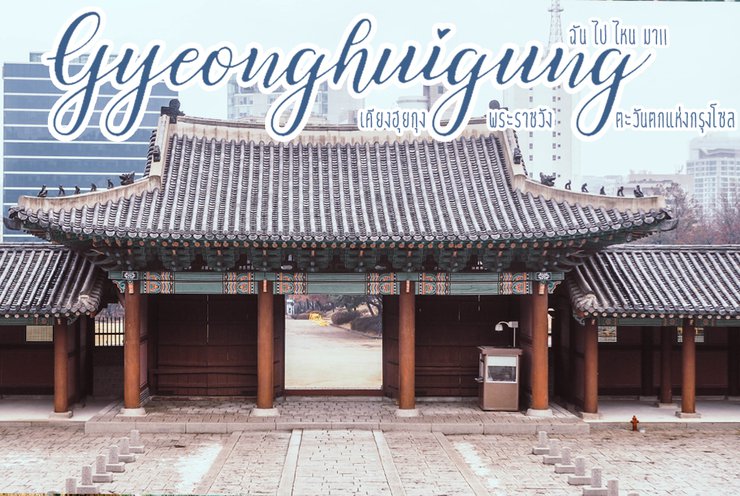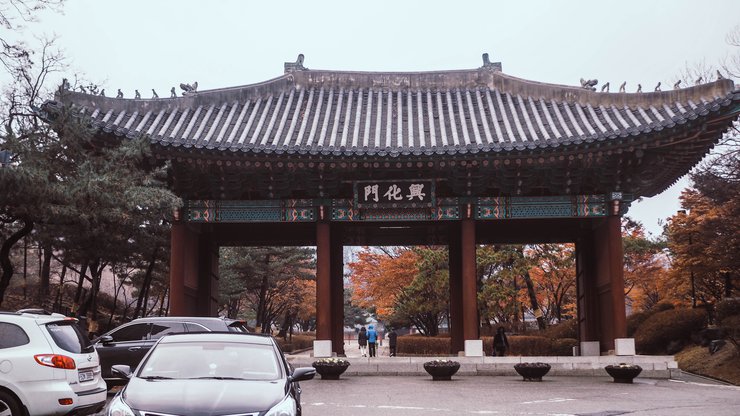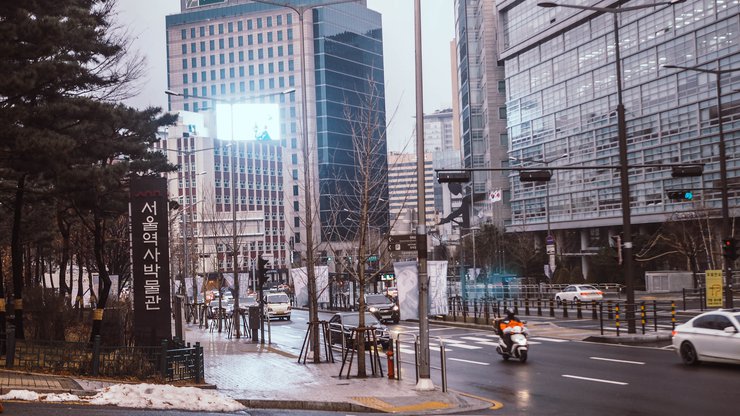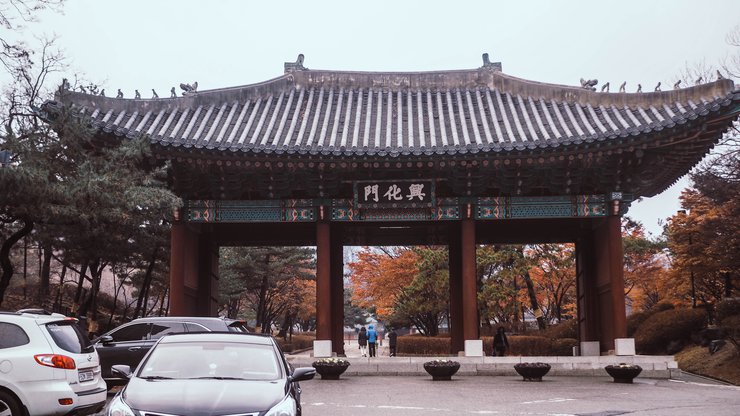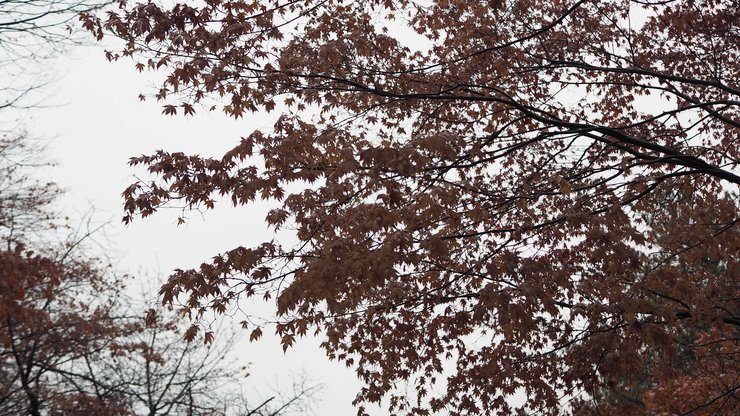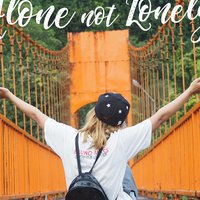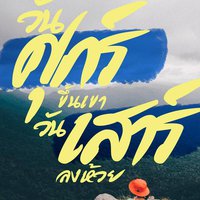While Gyeongbokgung Palace is undoubtedly a popular landmark in Korea, its popularity can lead to crowded conditions. For those seeking a less crowded alternative, Changdeokgung Palace offers a同樣令人驚豔的選擇, especially during the winter season. This historic palace from the Joseon dynasty boasts a stunning garden, known as the Secret Garden, which transforms into a breathtaking spectacle of colorful foliage during the winter months.

Despite the freezing Korean winter, we couldn't resist venturing outside! One hidden gem we discovered was Gyeongui Palace, a free-entry palace that rivals the grandeur of its more famous counterparts. With fewer tourists, it offered a serene and picturesque setting for capturing stunning photos.

+ Gyeonghuigung Palace (경희궁) – Royal Palace of Gyeonghui
Warning: Google Maps is not available in Korea.
Note the GPS coordinates and open them in the Map app (iOS devices have a built-in Map app that is not Google Maps; you can search for it).
GPS Coordinates: 37.571271, 126.968172
Travel Directions: Take the subway line 5 and get off at Seodaemun Station, exit 4. Walk straight ahead. (Even if you think you've walked a long way, if you haven't seen the palace on your left, the side you're walking on, you haven't arrived yet.)

As you walk, keep an eye on your left side. The palace will be there. A good indicator is the palace entrance, as there are few tourists here (I didn't see any foreigners, only Korean parents with their children). The gate and flower pots, which aren't actually flowers, are also noticeable.


Upon entering, the first thing that catches the eye is the stunning beauty of the Huigung Garden. Originally part of the palace grounds, it has been transformed into a captivating garden. During the winter season, the trees showcase a vibrant array of colors, transforming into a breathtaking spectacle of orange and brown hues, reminiscent of a "Fifty Shades of Orange" masterpiece.






After passing through the garden, we will encounter the entrance to the palace once again. It is said that during the late Joseon Dynasty, the Huigyeonggung Palace served as a reception area for the king, located on the western side. Hence, it was previously known as Seokjo, meaning "Western Palace." However, it was not merely a place for the king to relax during his leisure time. Instead, this palace was designated for receiving the king during emergencies. (It was constructed under the orders of King Gwanghae, the 15th king of the Joseon Dynasty. The palace likely served its purpose when King Gwanghae was still the Crown Prince. He staunchly resisted the Japanese invasion, while his father, King Seonjo, fled to China. Following the Japanese invasion, factions emerged supporting either the Crown Prince or King Seonjo. Ultimately, Prince Gwanghae abdicated the throne and was exiled to Ganghwa Island.)



There are four main palaces within the complex: Sungjeongjeon, Jajeongjeon, Yungbokjeon, and Hoesangjeon. As you walk up the hill behind, you will see the palaces lined up in a row.




The path up the hill is lined with trees, creating a beautiful garden.




The Majestic Sungjeongjeon Hall: A Center of Power and Diplomacy
The Sungjeongjeon Hall stands as the central edifice of the Gyeongbokgung Palace, serving as the primary venue for the king's morning court sessions, grand celebrations, and receptions for distinguished guests.











If you visit Korea, don't forget to stop by this palace. It's guaranteed to be worth your time, offering a comprehensive glimpse into Korean art and design that rivals any other location.
Please like and follow our page. Feel free to say hello and share your favorite travel destinations with us. :)
Where have I been? https://www.facebook.com/Chanpainaimaa/
Been There Alone
Monday, November 11, 2024 10:31 AM

